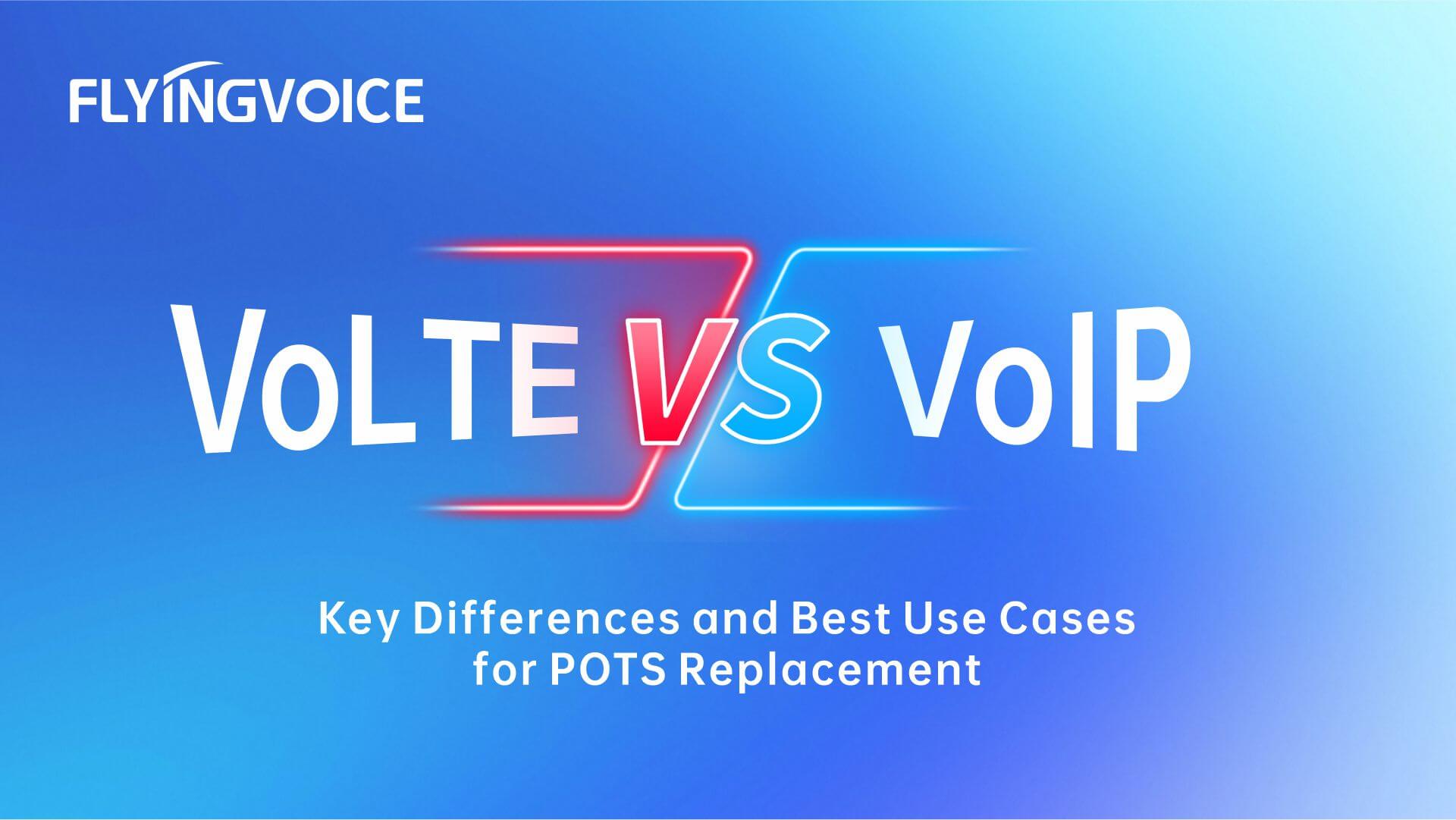What is VoLTE?
VoLTE, or Voice over Long-Term Evolution, leverages IP Multimedia Subsystem (IMS) technology to deliver voice communication over LTE networks. Unlike traditional VoIP, VoLTE is specifically designed to operate seamlessly on 4G LTE and 5G mobile networks.
In the United States, telecom providers have phased out 3G networks, maintaining 4G LTE alongside 5G infrastructure. Given LTE’s continued dominance, VoLTE will remain a key communication technology for years to come.
Key Differences Between VoLTE and VoIP
While both VoLTE and VoIP enable high-definition voice communication over IP-based networks, their underlying technologies and use cases differ significantly:

1. Network Media
● VoLTE operates exclusively on 4G LTE and 5G mobile networks. It benefits from dedicated bandwidth for voice calls, ensuring high-quality and stable communication.
● VoIP, by contrast, can function over any internet connection, including Wi-Fi, broadband, and mobile data networks.2. Voice Codecs
A codec converts analog voice signals into digital data for transmission and decodes them back at the receiver’s end. VoLTE and VoIP utilize different codecs optimized for their respective environments:
● VoLTE Codecs:
1. Enhanced Full-Rate (EFR)2. AMR Narrowband (AMR-NB)
3. AMR Wideband (AMR-WB)
4. Enhanced Voice Service (EVS)
● VoIP Codecs:
1. G.711: Ideal for PSTN integration; supports frequencies between 300–3,400 Hz.2. G.722: Wideband codec capable of HD voice, supporting frequencies from 50–7,000 Hz.
3. Opus: Ultra-wideband codec offering superior flexibility, adapting to network conditions with bitrates ranging from 6–510 Kbps.

3. Operational Conditions
● VoLTE: Requires VoLTE-compatible devices and SIM cards. Configuration is minimal, as telecom providers handle most settings.● VoIP: Deployment involves more complexity. For example, with cloud-based PBX, devices need to register SIP accounts, and additional features like SIP trunks may incur extra costs.
4. Reliability
Both technologies depend on network quality:
● VoLTE: Performs best in fixed installations but may face call quality issues during movement due to network handoffs.● VoIP: Offers flexibility across various networks but is similarly susceptible to quality fluctuations. Fixed-location setups tend to enhance reliability.
5. Scalability
● VoLTE: Requires SIM cards for each device, offering seamless scalability as networks transition to 5G.● VoIP: Highly scalable and adaptable for businesses of all sizes. Features can be quickly updated to meet evolving needs.
6. Cost Considerations
Both VoLTE and VoIP are more cost-effective than traditional POTS systems, offering lower maintenance costs and extended equipment lifespans. Pricing structures differ based on service providers and usage patterns.

Selecting the Right POTS Replacement Solution
When replacing legacy POTS lines, it’s essential to evaluate your specific needs:
●VoLTE excels in voice-only scenarios such as elevator phones or emergency call systems, where simplicity and reliability are paramount.
●VoIP, however, offers greater flexibility for applications like alarms, modems, and fax machines, where VoLTE’s codec limitations may pose challenges.
Why Choose Flyingvoice?
With over a decade of expertise in POTS solutions, Flyingvoice understands the unique requirements of POTS replacements. Our advanced solutions ensure seamless transitions while maintaining compatibility with legacy systems.
Flyingvoice’s One-Stop Solutions:
Includes the LM150 Industrial LTE Router for internet access, a power solution for uninterrupted service, and the PR08 ATA Gateway, delivering traditional dial tones to legacy devices.

PR12 All-in-One POTS Replacement Device:
Combines the features of the POTS Box with VoLTE and VoIP integration in a compact design, making it a game-changer for POTS replacements.

Flyingvoice’s Competitive Edge:
Our innovative ATA technology minimizes failure rates for alarms, fax, and modem calls—ensuring legacy devices operate as reliably as before.
Act Now for a Seamless Transition
Don’t wait until the last minute to upgrade your communication systems. With Flyingvoice’s expertise and cutting-edge solutions, your transition to modern VoIP and VoLTE technologies will be smooth and reliable.
Contact us today and let Flyingvoice future-proof your communication infrastructure!














 Back to list
Back to list









